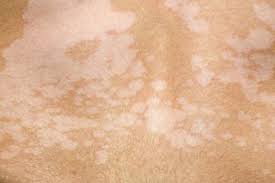
Pityriasis Rosea: Causes, Symptoms, and Treatment
Pityriasis Rosea is a common, self-limiting skin condition that presents as a scaly rash, often starting with a single large patch (herald patch) followed by smaller lesions across the body. It is believed to be associated with viral infections and usually resolves on its own within 6 to 8 weeks.
Causes
The exact cause of pityriasis rosea is unknown, but it is thought to be linked to:
- Viral infections – Possibly related to human herpesvirus 6 or 7 (HHV-6/7).
- Weakened immune system – Stress or illness may trigger the condition.
- Seasonal changes – More common in spring and fall.
- Non-contagious – It does not spread from person to person.
Symptoms
- Herald patch – A single, round or oval pinkish-red patch (2-10 cm), usually on the chest, back, or abdomen.
- Smaller scaly rashes – Appear 1-2 weeks after the herald patch, forming a “Christmas tree” pattern along skin folds.
- Mild itching – Can be aggravated by heat or sweating.
- Flu-like symptoms – Fever, headache, sore throat (in some cases).
Diagnosis
Pityriasis rosea is usually diagnosed through a physical examination. If needed, a doctor may perform:
- Skin biopsy – To rule out other conditions like eczema or psoriasis.
- Blood tests – If symptoms are unusual or prolonged.
Treatment
Pityriasis rosea resolves on its own within 6-8 weeks. However, treatments can help manage discomfort:
1. Home Remedies & Skincare
- Use gentle, fragrance-free moisturizers to soothe dry skin.
- Take lukewarm baths with oatmeal to relieve itching.
- Avoid hot showers and excessive sweating, as heat can worsen itching.
- Wear loose, breathable clothing to prevent irritation.
2. Medications (If Needed)
- Antihistamines (e.g., cetirizine, loratadine) – Help reduce itching.
- Topical corticosteroids (e.g., hydrocortisone) – For severe inflammation.
- Calamine lotion – Provides soothing relief.
- UV light therapy – May be recommended for persistent cases.
Prognosis & Prevention
- Pityriasis rosea is not dangerous and leaves no permanent scars.
- Pigmentation changes may temporarily occur, especially in darker skin tones.
- Recurrence is rare, but possible.
- Maintaining good skincare habits and reducing stress may help prevent flare-ups.
Since it is self-limiting, patience and symptom management are key. If the rash lasts longer than 12 weeks or worsens, consult a doctor for further evaluation.
Would you like additional skincare recommendations for relief? 😊

